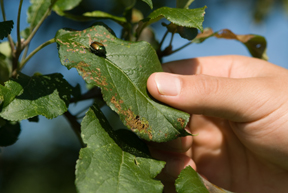What Is IPM?
 Integrated Pest Management (IPM) is a comprehensive approach to solving pest problems
Integrated Pest Management (IPM) is a comprehensive approach to solving pest problems
Instead of simply trying to eradicate a pest, an IPM approach considers all of the information and experience available, accounts for multiple objectives, and considers all available preventive and curative options. Based on that foundation, informed decisions are implemented to achieve optimum results. What those optimum results vary with each user’s individual preferences. However, in general terms, the goal of IPM is to provide safe, effective, economical, environmentally sound, and socially sensitive outcomes.
IPM can be used wherever pest damage occurs. Among the more common types of pests are insects, mites, rodents, viruses, fungi, bacteria, and weeds. The IPM approach has been applied to pest problems in situations as diverse as houses and apartments, food handling facilities, golf courses, storage areas, and farms.
The specific techniques used for integrated pest management vary with each situation, but there are fundamental principles that define IPM.
- Identify the pest(s) that are the source of the problem. This is not always as simple as it may seem. Correct pest identification is required to identify optimum solutions.
- Understand the biology and economics of the pest and the system in which the pest exists.
- Monitor pests and natural controls. Use standardized, tested monitoring methods rather than basing decisions on haphazard observation.
- Establish economic or aesthetic injury thresholds. Pest management decisions are based on the potential damage from pest infestations, the status of natural enemies, the sensitivity of the protected site (such as stage of development of a crop), and the weather. Actions are taken only when the potential damage is sufficient to justify action.
- Select an appropriate strategy of cultural, mechanical, biological, and/or chemical prevention or control techniques.
- 5A. Cultural practices include habitat modification and adapting operating procedures so that pest damage is reduced and natural control is enhanced. Sanitation is the removal or cleaning of sources of pest infestation. Choosing plant varieties that are resistant to pest injury is a cultural control. Other agricultural examples are adjusting planting time, fertilization, tillage, and harvest operations to have the most beneficial or least detrimental affect on the pest management situation.
- 5B. Biological controls are predators, parasites, and diseases that attack pests. Measures can be taken to conserve naturally occurring populations. In some situations where naturally occurring biological controls are not effective, they can be introduced from outside sources.
- 5C. Chemical control involves selecting a pesticide with the lowest toxicity to humans and non-target organisms (including biological controls), and using it in such a way as to prevent or minimize undesirable environmental effects. The lowest effective amount of pesticide is applied from carefully calibrated spray equipment.
- Evaluate the pest management program and improve it when possible. This requires keeping records and reviewing them on a regular basis.
NOTE: When using pesticides, always follow label directions!
